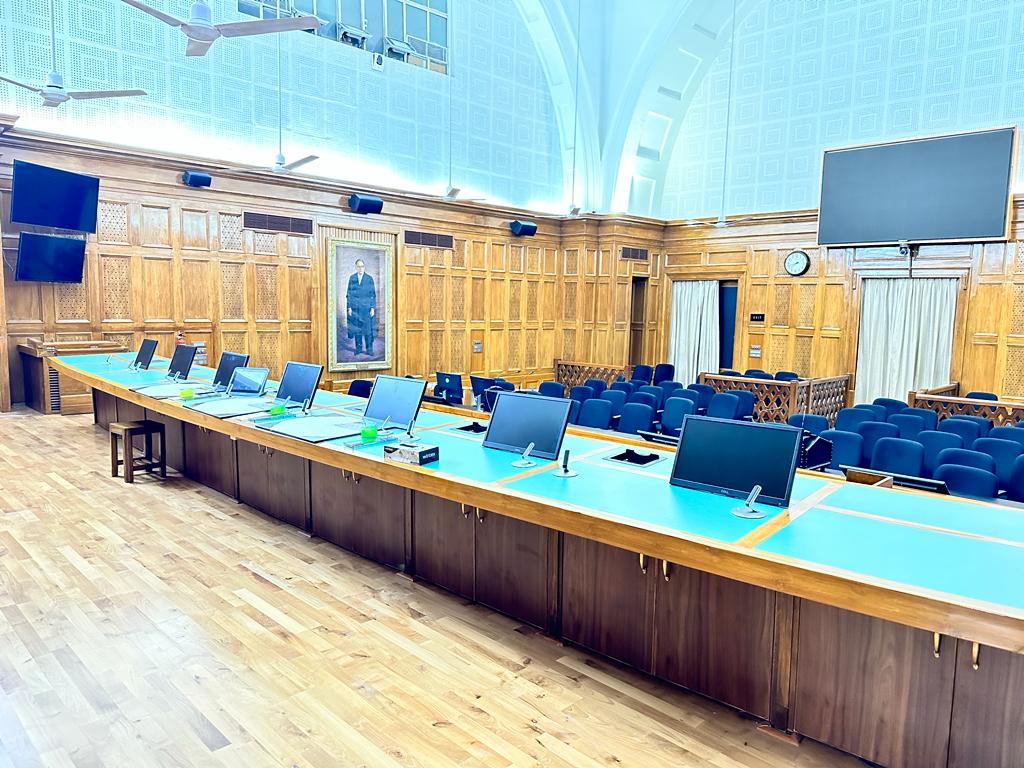As the Supreme Court reopened on Monday after the summer vacations, the premises wore a new look, boasting of courtrooms equipped with digital screens, Wi-Fi connectivity, upgraded video conferencing facilities and enhanced inter-court connectivity.
The futuristic upgrades, implemented as part of green initiatives under the dynamic vision of Chief Justice of India D.Y. Chandrachud, are set to enhance the optimum use of technology in the justice delivery system, while also reducing the reliance of paper.
Expressing his happiness over the new set up, the CJI said that with the removal of books and paper documents in courtrooms, more space would now be available to lawyers.
As per the CJI, the Wi-Fi connectivity would not only remain limited to the courtrooms, but would also be extended to the bar rooms and court passages.
Encouraging the stakeholders to share their feedback on the new set-up, he said the lawyers would have more space now with all books and similar stuff gone from the sides. He said courtrooms numbered 1 to 5 have been made Wi-Fi enabled, adding that the bar rooms and court passages would soon be enabled with the same.
Earlier, books and documents dating back to the 1950s were kept on both sides in courtrooms, leaving little space for lawyers to stand inside.
However, CJI Chandrachud said that all these books and papers, which have been shifted out of the courtrooms, would still be relied upon. He suggested all courtrooms of the country to resemble the Apex Court.
The digital enhancements implemented in Courtrooms number 1 to 3 at the Supreme Court premises include installation of a state-of-the-art Digital Video Conferencing (VC) system to facilitate efficient communication and collaboration. This system would enable remote participation and virtual meetings, enhancing the accessibility and connectivity of the courtrooms.
Cable cubbies have been integrated into these courtrooms to fulfil the diverse connectivity needs of modern technology. The cubbies have been equipped with LAN connections, HDMI outputs, USB C&A ports along with power sockets. The use of these would help in integrated use of multimedia devices, while ensuring a clutter-free environment.
A futuristic LED video wall has also been installed in the courtrooms, serving as a high-resolution display for camera feeds and multimedia content. This impressive video wall would enhance the visual impact of presentations, evidence and video recordings, creating an immersive and engaging courtroom experience.
To ensure optimal audio quality and distribution in these courts, a comprehensive sound reinforcement system has been implemented.
This system would include flush mount Front of House (FOH) speakers, strategically positioned under table speakers, and suitable amplifiers. These enhancements would deliver clear and balanced audio throughout the courtroom, ensuring that every voice and audio source was heard with exceptional clarity.
An advanced document camera has also been provided in the courtrooms to streamline the sharing of document content, which would enable the clear capture and real-time display of physical documents, facilitating seamless sharing of important legal materials, evidence and exhibits.
The technology has been designed in such a way to simplify the presentation of visual information and enhance the accessibility of courtroom proceedings.
The cutting-edge technology upgrades have been aimed at significantly enhancing the technological capabilities and overall courtroom experience.
A software has also been developed by the Supreme Court to facilitate the advocates to upload reference material and citations relating to the matter. A Constitution Bench hearing in September last year had witnessed the intent and commitment of the Apex court to work towards paperless functioning.
The Supreme Court has also been working on a software to provide epass facility to the advocates and litigants to access the Supreme Court.
Some of the other e-initiatives undertaken recently by the Apex Court include the launch of eSCR, Advocate Appearance portal, online RTI portal and implementation of e-office module in the Registry.


